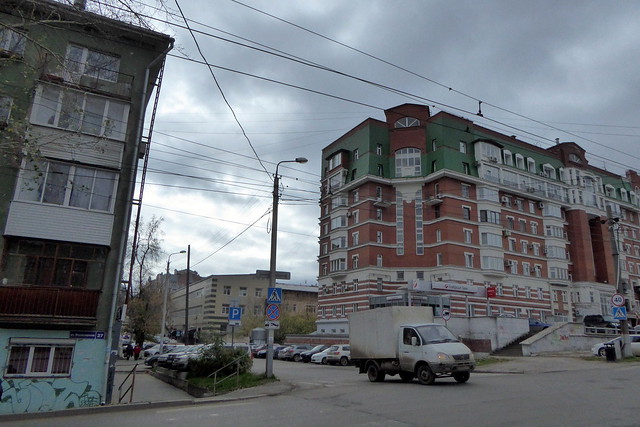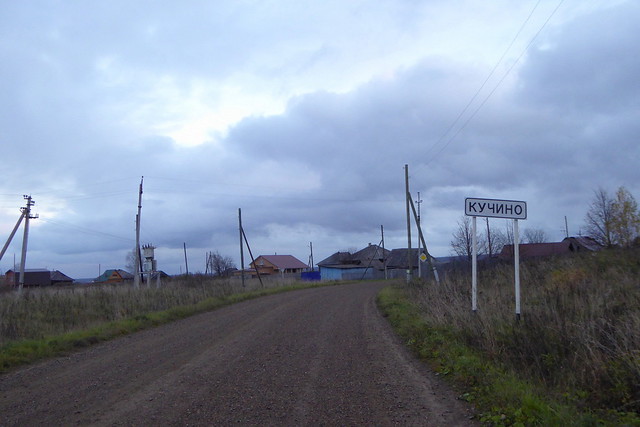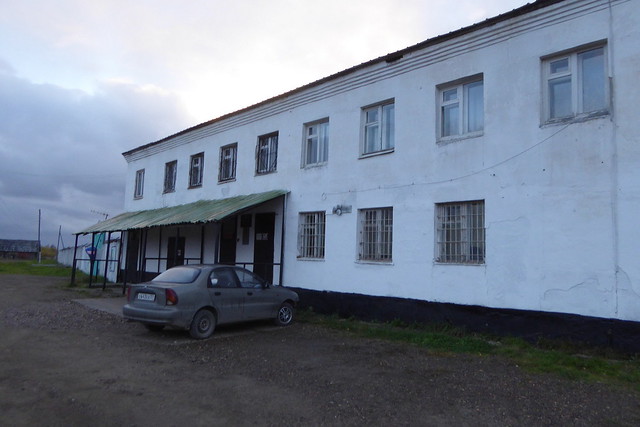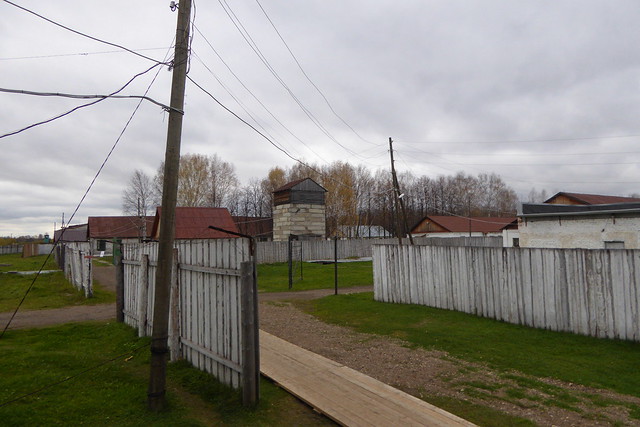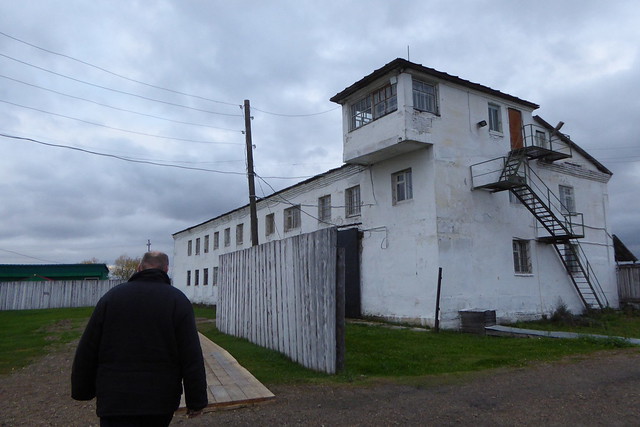My first stop along the Transsiberian Railroad: Perm. Just above one million people live here, more than 1000km east of Moscow. I arrived at noon, quickly found the tourist information (as opposed to Moscow, this city is one of the few Russian cities that actually have one!), and went to all the points of interest in less than two hours. There really are not a lot of touristic sights, although this is a huge city by European standards. (I later learned that the same applies to all major Russian cities east of Perm (except for Irkutsk, maybe.)
But I had heard about the Gulag Museum Perm36, located in the buildings of the only remaining labor camp in Russia and I decided to spend the afternoon exploring that. I had not been aware of it when I made that decision, but it took two hours by bus to get to an intersection in the middle of nowhere and from there another 40 minutes of walking along a gravel road, until I finally arrived in the small village Kuchino.
I found a dismal looking building that must have been white a long time ago. It looked like the administration building of a labor camp – which it was. I went up to the massive metal door, it was locked. Ringing the bell several times did not result in an answer, neither did nocking, but a soft sound became audible through the dark keyhole. After a while the bolt was pulled back and the door swung open, a big man blocking the entry and scowling at me. He did not speak English, but in my insufficient Russian and with gestures and pointing at the opening hour sign I made clear to him that I wanted to visit the museum. He told me to leave. But I had not come this far to back away now! I begged and made clear to him what I had gone through to get there, and finally he let me in. I learned that I was the only visitor of the day and that the guide had already left. The guy who had opened the door was Sergey, the security guard. After some help of google translate he agreed to show me around the property. I got an audio guide and Sergey lead the way.
He saw that I was interested in what he showed me, and he supplemented the sparse information I got from the audio guide with a mix of Russian, English and German words. He wanted to show me the whole property, which took until 18:30, half an hour past closing time. He did not seem to mind, neither did I, although the museum itself was not actually that interesting: Some of the important buildings were closed and there was not much of the “labor-camp-atmosphere” left. The place just had a run down and somewhat sleepy feel to it. And it gave me the impression that circumstances for the prisoners had not actually been that bad: They had had a volleyball-court, a library and even a cinema. I later read that local authorities had forced the museum to close in the beginning of this year. And when it reopened in late summer under a new director it had changed its theme: From portraying the lives and backgrounds of political prisoners and the wrong under the Stalin regime it had now gone to merely showing how this labor camp was structured and operated. New message: The detained had been a danger to the country, but by working here they had helped the USSR to win the war and to improve the economy.
There is certainly more to it and I find it sad that there are still forces in this (in many ways) modern country who are working to cover up and to deny the other side of the story.
For me the trip was still worth it, most of all because of the adventurous situation though.
My personal security guard and guide Sergey.

